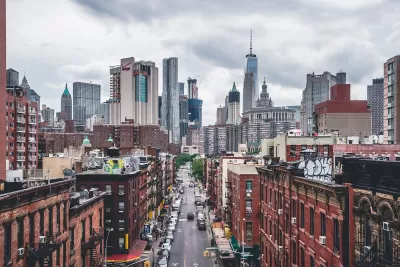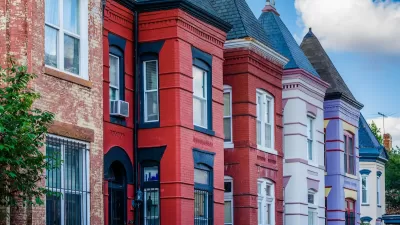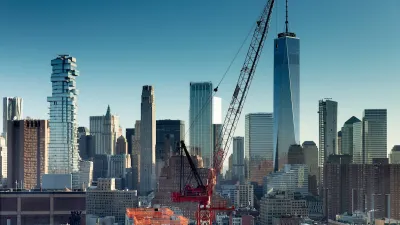Cities like Austin and Minneapolis are making major changes to their zoning codes to encourage housing construction, but New York’s proposed reforms are far less ambitious.

In a piece for The City, Samantha Maldonado explains how cities like Minneapolis and Austin have made far more ambitious zoning reforms than New York City in their efforts to encourage more housing development and bring down housing costs for their residents.
According to Maldonado, “Some parts of the original City of Yes proposal were from the onset less ambitious than elsewhere, while changes made as part of negotiations further scaled back the agenda.” The city says the plan could yield up to 80,000 new housing units, but modifications requested by City Council members will mitigate growth in some low-density neighborhoods, prompting criticism that the alterations ‘run counter to the initial promise of City of Yes to create “a little bit more housing in every neighborhood.’”
The proposed City of Yes plan would not allow duplexes or triplexes on lots zoned for single-family homes, while Minneapolis does. Minneapolis, Austin, Buffalo, and other cities have also scaled back or eliminated parking requirements, further reducing the cost of construction. While Columbus, Ohio allows buildings up to 16 stories tall near transit, New York’s plan would limit transit-adjacent building height to five stories in some neighborhoods.
FULL STORY: How Minneapolis and Austin Outdid New York City in the Quest to Enable More Housing

Montreal Mall to Become 6,000 Housing Units
Place Versailles will be transformed into a mixed-use complex over the next 25 years.

Planetizen Federal Action Tracker
A weekly monitor of how Trump’s orders and actions are impacting planners and planning in America.

DARTSpace Platform Streamlines Dallas TOD Application Process
The Dallas transit agency hopes a shorter permitting timeline will boost transit-oriented development around rail stations.

Colorado Landfills Emit as Much Pollution as 1M Cars
Landfills are the third-largest source of methane pollution in Colorado, after agriculture and fossil fuel extraction.

Tulsa Paid Remote Workers $10,000 to Move In — Nearly All of Them Stayed
The Tulsa Remote program generated more than $4 in local economic benefits for every dollar spent.

Chicago Transit: $770M Shortfall, 40% Service Cuts Loom
Despite dire warnings from transit officials, the Illinois General Assembly ended its legislative session without a solution.
Urban Design for Planners 1: Software Tools
This six-course series explores essential urban design concepts using open source software and equips planners with the tools they need to participate fully in the urban design process.
Planning for Universal Design
Learn the tools for implementing Universal Design in planning regulations.
City of Mt Shasta
City of Camden Redevelopment Agency
City of Astoria
Transportation Research & Education Center (TREC) at Portland State University
City of Camden Redevelopment Agency
Municipality of Princeton (NJ)
Regional Transportation Commission of Southern Nevada





























